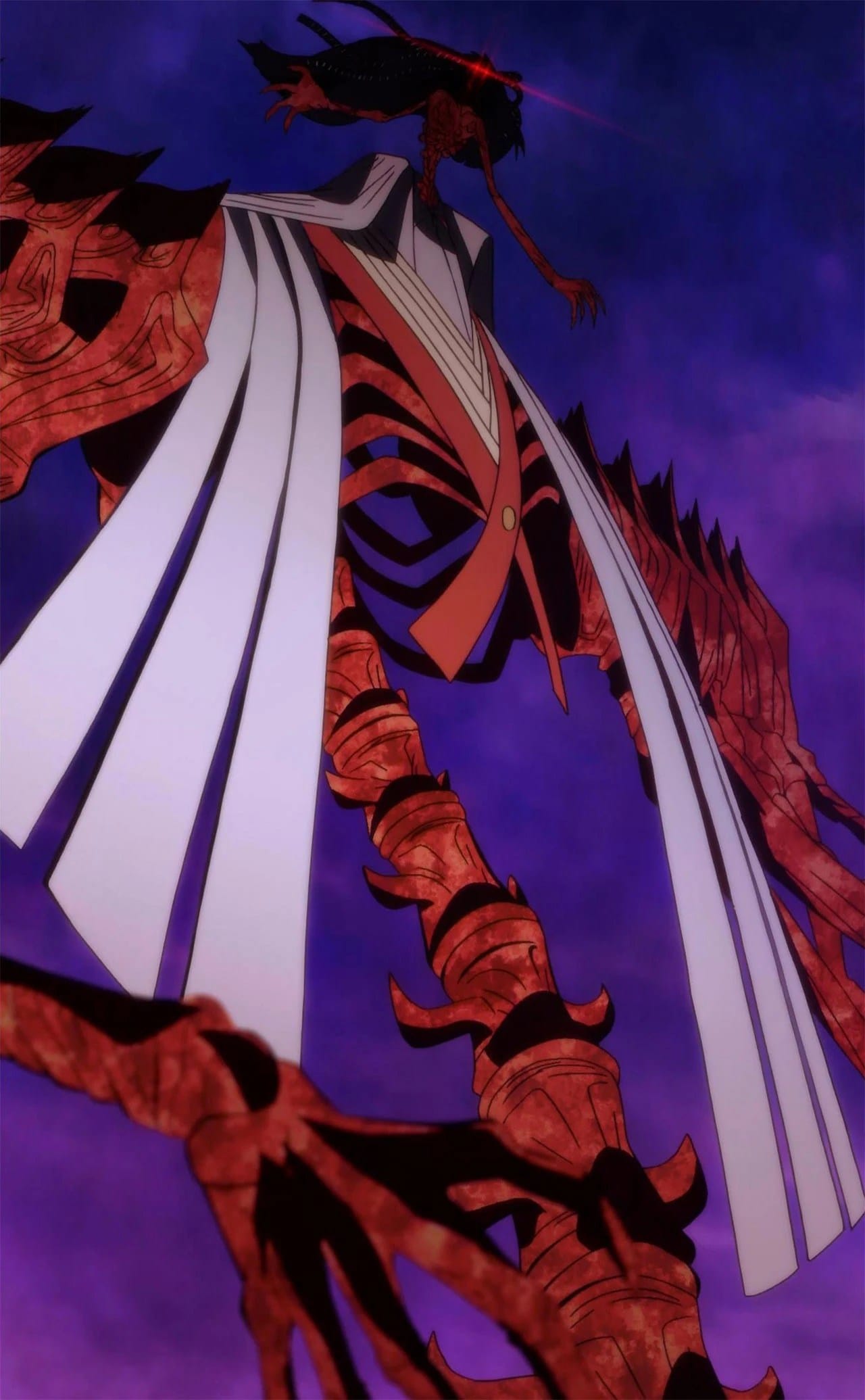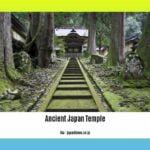Step into a world of ancient Japanese myth, where life and death intertwine in a tale as old as time: the story of Izanami’s journey into the shadows of Yomi, the underworld. Follow the life-giving goddess as she navigates this realm of decay, transforming from a beacon of creation into a chilling embodiment of death itself.
From Life-Giver to Ruler of Decay
Izanami, the goddess who breathed life into the world, embarks on a journey to Yomi, a journey that changes her forever. Imagine a vibrant flower, petals bursting with color, slowly wilting, its hues fading to gray. Izanami’s once-youthful glow is replaced by an unnerving pallor, her once-sparkling eyes turning hollow.
The weight of Yomi, a realm governed by different rules, begins to seep into Izanami’s very essence. Her joy and love twist into bitter resentment, her once-gentle touch capable of inspiring terror. Izanami, creator of life, becomes consumed by death, transforming into its powerful and terrifying ruler.
Her heartbroken lover, Izanagi, dares to enter Yomi, hoping to bring his beloved back. The sight that greets him shatters his heart. Izanami, barely recognizable, becomes a decaying shell of her former self. Horrified, Izanagi flees back to the world of light, breaking a sacred promise and solidifying Izanami’s transformation. Her fury echoes throughout Yomi, severing her ties to the land of the living forever.
Izanami’s tragic fate isn’t just a tale; it’s a reminder that resonates throughout Japanese culture, a haunting reminder of the delicate balance between life and death. Her story continues to inspire art, literature, and spiritual practices in Japan to this day.
Why Was Izanami Rotting? Decoding the Decay in Japanese Mythology
Izanami’s descent into Yomi raises a question: what caused her radiant form to decay? Imagine Yomi not merely as a gloomy underworld, but as a realm where life undergoes a profound transformation. When Izanami eats the food offered in Yomi, she unknowingly binds herself to its laws, sealing her fate.
Her vibrant beauty fades, mirroring the decaying nature of the underworld, a consequence of her choice and a stark illustration of how even a powerful goddess is subject to the cycle of life and death.
Recommended Titles:
- Izanami’s Decay: The Tragic Fate of a Shinto Creator (Focuses on the tragedy and Izanami’s central role)
- Yomi’s Touch: Why Izanami Rotted in the Japanese Underworld (Highlights Yomi’s influence and the consequence of death)
- Beyond Death’s Door: Izanami’s Transformation in the Land of Yomi (Emphasizes the transformative aspect of death and the underworld)
Powerful Key Lines:
- Izanami’s rotting form in Yomi isn’t just decay; it’s a poignant symbol of death’s irreversible grip and the boundary between the living and the dead. (Focuses on symbolism and consequences)
- The myth of Izanami illustrates that even powerful creator deities are subject to the natural order of life and death, highlighting Shintoism’s acceptance of mortality. (Emphasizes universality of death and Shinto beliefs)
- Izanami’s transformation in Yomi serves as a cautionary tale against violating the sacred laws of the underworld and emphasizes the importance of respecting the divide between life and death. (Focuses on the narrative’s message and warnings)
- While Izanami’s rotting symbolizes decay, it also represents rebirth and transformation, as her death paves the way for new life and the birth of other deities. (Offers a nuanced perspective on death as a beginning)
Important Details:
- Izanagi and Izanami: The primal creator deities in Shinto mythology, responsible for birthing the Japanese islands and other deities.
- Izanami’s Death: She dies giving birth to the fire deity, Kagu-tsuchi, and descends to Yomi, the underworld.
- Yomi, the Underworld: Described as a dark and desolate realm, where the dead reside. Consuming food in Yomi binds one to it eternally.
- Izanagi’s Journey: Grief-stricken, Izanagi follows Izanami to Yomi to retrieve her.
- The Transformation: Izanagi finds Izanami in a state of decay, transformed by Yomi’s influence.
- Broken Promise: Izanami forbids Izanagi from looking at her true form, but he breaks the promise, horrified by what he sees.
- Escape and Separation: Izanagi flees Yomi, sealing the entrance and solidifying the separation between the living and the dead.
- Cleansing Ritual: Izanagi undergoes a cleansing ritual to purify himself from the pollution of the underworld.
- Birth of New Deities: From this cleansing ritual, Amaterasu (sun goddess), Tsukuyomi (moon god), and Susanoo (storm god) are born.
However, Izanami’s decay also suggests a new beginning. From her transformed form, new deities emerge, like Amaterasu, the sun goddess, and Susanoo, the storm god. This rebirth showcases how death, although feared, paves the way for new life.
Izanami’s Transformation: From Creator to Corruptor?
While Izanami played a powerful role in creating life, her story takes a turn. Was this a descent into “evil” or something more? Izanami’s story isn’t a classic battle of good versus evil. Instead, it speaks to the changes that death brings, even to gods. When she dies giving birth to the fire deity, her husband, Izanagi, is devastated and journeys to Yomi, hoping to bring her back.
Yomi, however, begins to change Izanami. The underworld’s influence washes over her, making her appearance frightening and decayed. This change reflects the Shinto belief that death is a transformative process, not a moral judgment.
Izanagi, upon seeing Izanami in her decayed state, breaks his vow to wait before bringing her back. This betrayal deepens the divide between them, pushing Izanami further into Yomi’s clutches. She evolves into a powerful figure, but not the goddess who birthed life. Izanami becomes the embodiment of death, forever bound to the underworld.
Recommended Titles:
- From Creator to Corruptor: Why Did Izanami Turn Evil? (Emphasizes the drastic shift, adding intrigue)
- The Fall of Izanami: Exploring the Darkness of Yomi’s Embrace (More evocative, focuses on the underworld’s influence)
- Izanami’s Fury: Betrayal, Death, and the Birth of Japanese Hellscapes (Provocative, hints at consequences beyond Izanami herself)
Powerful Key Lines:
- Izanami’s transformation wasn’t about becoming “evil,” but a tragic embodiment of death’s inevitable decay, reflecting Shinto beliefs about life and death’s interconnected nature. (Challenges the “evil” premise, offers a nuanced interpretation)
- Yomi, more than just an underworld, warped Izanami, showcasing its power to corrupt even the divine, highlighting the Shinto belief in the transformative nature of spiritual realms. (Focuses on Yomi’s influence, adding a layer of environmental impact)
- Izanagi’s broken promise to not look upon her in Yomi shattered Izanami’s remaining essence, twisting her love into vengeful rage, exemplifying the destructive potential of broken vows in Shintoism. (Introduces a critical plot point often overlooked, emphasizes emotional consequences)
- Izanami’s story serves as a cautionary tale in Shintoism, illustrating the delicate balance between life and death, and the profound consequences of disrupting the natural order. (Broadens the scope, highlighting the myth’s message and cultural significance)
Izanami’s story is a powerful metaphor for the respect we should have for the delicate balance between life and death. It reminds us that when we interfere with the natural order of things, there are consequences.
Izanami’s Impervious Rage: Conquering Persona 4 Golden’s Final Challenge
You’ve reached Izanami in Persona 4 Golden, and suddenly, she’s put up an impenetrable wall, transitioning into her second, more powerful, form. Like a video game boss powering up, this is not the time to go in guns blazing.
Instead of wasting precious SP on attacks that won’t work, consider this an opportunity. Izanami might be gearing up to unleash serious pain, but this downtime is your chance to regroup.
Recommended Titles:
- Izanami’s Impervious Rage: Conquering Persona 4 Golden’s Final Challenge (Emphasizes the difficulty and provides a sense of achievement)
- Persona 4 Golden: Deciphering Izanami’s Impervious Defense (Strategies & Tips) (Focuses on strategy and offers practical help)
- Beyond Impervious: Unlocking the True Ending Against Izanami in Persona 4 Golden (Connects the fight to the narrative and a desirable outcome)
Powerful Key Lines:
- Izanami’s “impervious” state isn’t a glitch, it’s your cue to brace for the true final battle. (Creates intrigue and foreshadows a greater challenge)
- Don’t waste your attacks! Izanami’s impervious phase is your window to heal, buff, and prepare for her devastating next form. (Provides actionable advice with a sense of urgency)
- Surviving Izanami’s onslaught requires more than brute force; mastering Persona fusion and exploiting elemental weaknesses are crucial to claim victory. (Highlights the strategic depth of the encounter)
- The “impervious” phase reflects Izanami’s nature as a dualistic deity, challenging players to confront both creation and destruction in their pursuit of truth. (Adds a thematic layer, linking gameplay to lore)
Here’s the Game Plan:
- Batten Down the Hatches: Focus on using your strongest defensive skills and items to minimize damage.
- Patch Up and Power Up: Heal up any wounds and use items or skills that boost your stats.
- Know Your Enemy: Analyze Izanami’s strengths, weaknesses, and attack patterns. Use this information to adjust your Persona setup and develop a solid battle strategy.
Remember: Patience is key. This “impervious” phase tests your strategic thinking as much as your battling skills. Use this time wisely, and you’ll be ready to take on whatever Izanami throws at you next!
For even more insight into ancient footwear, discover the distinctive design of Carthaginian soldier shoes, crafted for both comfort and protection on the battlefield.
- Crypto Quotes’ Red Flags: Avoid Costly Mistakes - June 30, 2025
- Unlock Inspirational Crypto Quotes: Future Predictions - June 30, 2025
- Famous Bitcoin Quotes: A Deep Dive into Crypto’s History - June 30, 2025
















